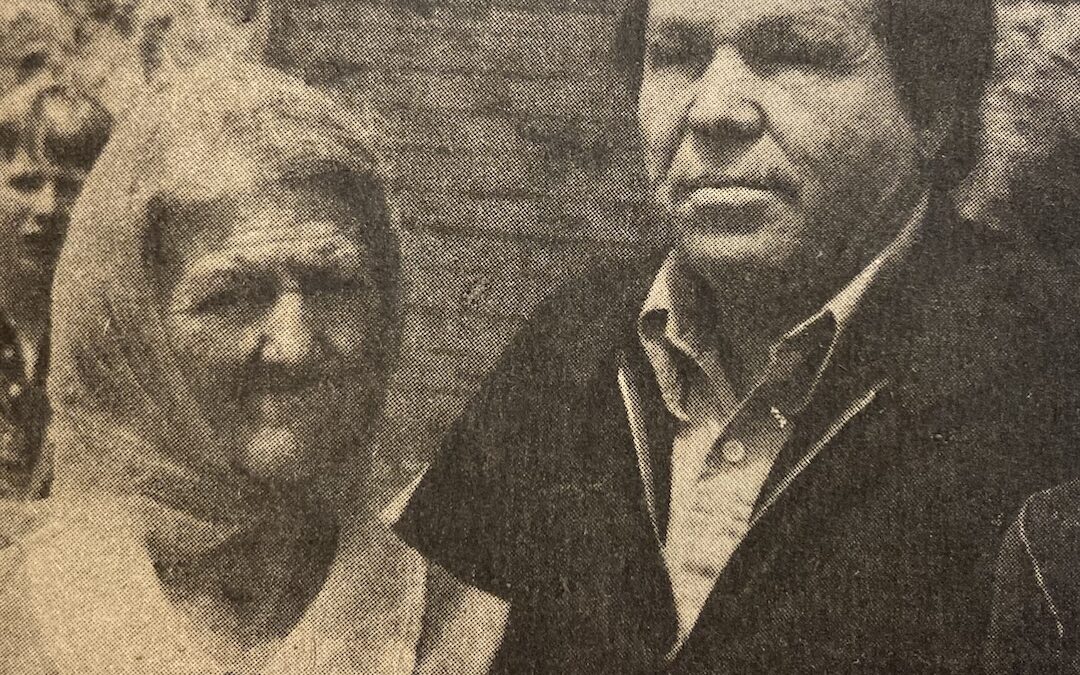
by jphilo | Dec 15, 2023 | Mystery Update

“Bud and Rachel have to be in your book,” my Harding County friend said as we sat down to coffee several years ago.
“But they sold their company to the West River Telephone Co-op the year before we moved to town,” I said.
“That’s a minor detail,” she said. “Besides, you’re writing fiction, right?”
“Okay,” I agreed, “tell me how their phone system worked.”
She didn’t need to describe Bud and Rachel because they and their mule lived in Camp Crook when we did. We saw them from time to time, the most notable being the night before we moved to Iowa in 1985 to be closer to hospitals where our son could be treated for his rare medical condition.
Hiram answered the door and invited Rachel inside.
“Me and Bud wanted to tell you goodbye and to give you this.” She handed us a back issue of the county paper, Nation’s Center News. “There’s an article about me and Bud in there. So you don’t forget us.”
“Thank you,” I said, noticing that she had written “Please look on page 3” above the masthead in spidery letters.

Next she gave Hiram an envelope. “It’s a little traveling money. For emergencies.” She smiled at our son, who’d had lots of medical emergencies since his birth three years ago.
Rachel and Bud were no strangers to childhood medical emergencies. Rachel was born with a cleft lip and palette in 1910 and was spoon fed Carnation canned milk during her early months. Eventually the people in the small Montana community where her family lived raised money so her mother could take her by train to Mayo Clinic for surgery. Bud lost his vision in a 1928 dynamite explosion when he was eleven.
Rachel’s surgery was successful but not elegant. Her speech was difficult to decipher, especially on the phone, but she never stopped talking or connecting calls. Bud’s decades-old scars were visible, but he climbed telephone poles and installed phones confidently.
I can’t imagine the West River Mysteries without Gus and Betty Yarborough, for whom Rachel and Bud were the prototypes. Betty is a vital communication (and gossip) hub in a time before cell phones. Gus and Betty exemplify the essential roles people with disabilities can play when given the opportunity to use their abilities.
As for the $35 Rachel and Bud gave us, it was the exact amount needed to pay for a new prescription medication our son needed on the trip to Iowa.
As for the newspaper article, it lives in a file in my office along with my most prized South Dakota memorabilia from our years there.
As for Rachel and Bud, you are remembered.
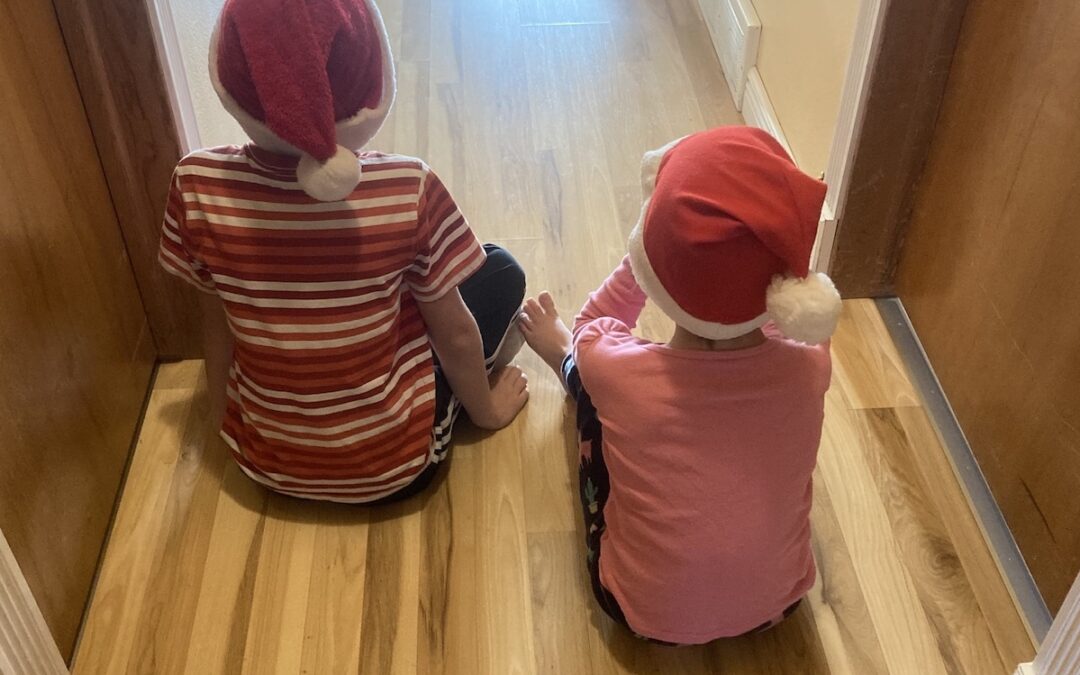
by jphilo | Dec 31, 2022 | Mystery Update, See Jane Dance!, See Jane Dig!, See Jane Run!, See Jane Sing!
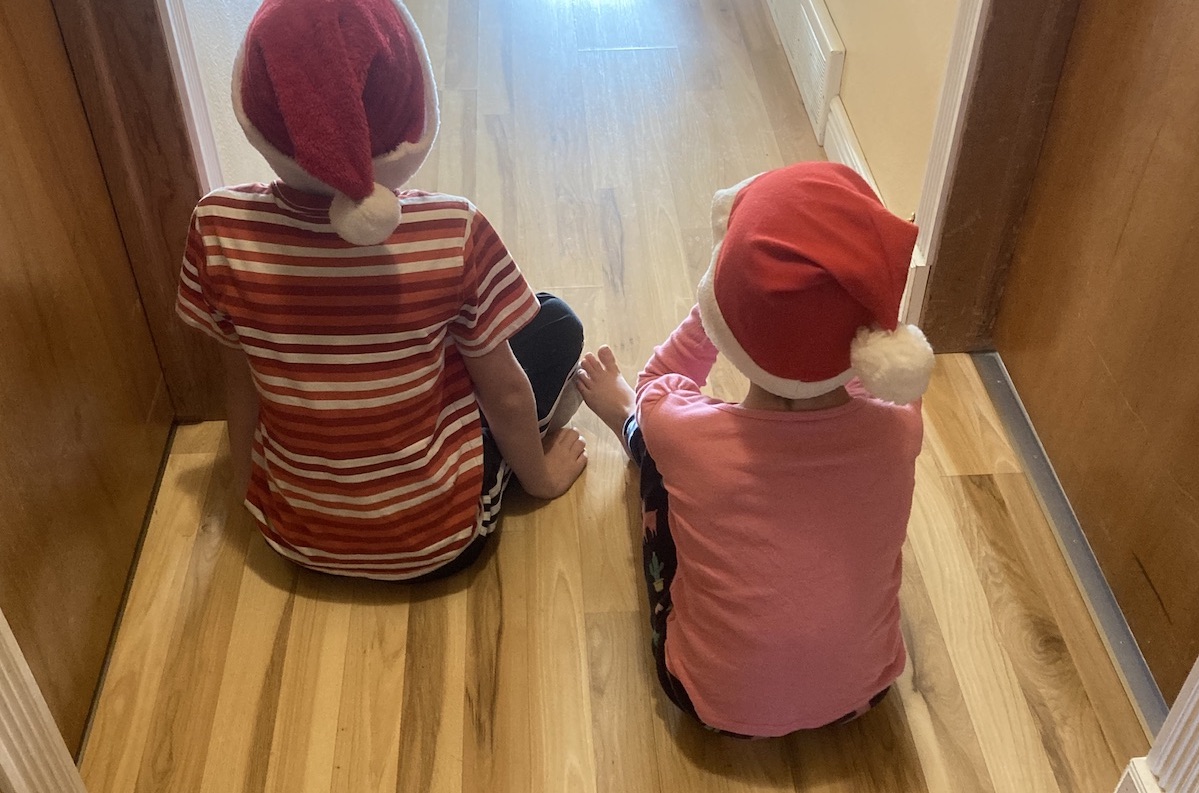
Introducing the See Jane Run Advisory Board gives me great pleasure. The board’s formation came about when the 7 and 4-year-old grandchildren were back seat passengers in our car a few days after Christmas, 2022. Hiram was driving so I directed all my attention to the following conversation. It began when the 7-year-old became curious about the box on the seat between him and his sister. It contained copies of See Jane Run! and See Jane Sing!. The 7-year-old opened the box and used his burgeoning reading skills to read the titles, emphasis on burgeoning as you’ll see below.
“Is Seejane the girl on the front of these books?” he asked.
“Yes, but since there’s a space between ‘See’ and ‘Jane’ it’s pronounced ‘See Jane.'” I explained.
“Oh, I see. Jane is the girl. Why are there different covers?”
“Because they’re two different stories. The first is See Jane Run! and the second is See Jane Sing!”
“What kind of books are they?”
“They’re mysteries. Jane catches bad guys.” I added a bunch more, but all of you have heard the spiel, so there’s no need to subject you to it again.
The 4-year-old piped up. “Are you going to write more of these books?”
I told them about the upcoming titles, See Jane Dance! and See Jane Dig! With that the floodgates of their imaginations burst wide open.
“Grammy, you should write See Jane Christmas!” said the 7-year-old.
“That’s a great idea, and there’s actually a Christmas program in See Jane Sing!”
Back to the 4-year-old. “How about See Jane Halloween! instead?”
“I have a better idea,” said the 7-year-old. “See Jane Underground! where they go to London and catch bad guys in the underground subway.”
“Or See Jane Invisible Hole! where they dig a hole and it’s invisible and Jane jumps in and the bad guys don’t see it and they fall in…”
The 4-year-old went on and on, but I missed the gist of her plot line because my mind was on how anyone would see Jane do anything in an invisible hole.
“Grammy,” interrupted the 7-year-old. “You could make Jane statues to sell. And tee-shirts.”
“And earrings,” added the 4-year-old. “And you could give Jane a sword and a shield and a gun to shoot bad guys,”
“Jane doesn’t like guns. She doesn’t own one.”
The 4-year-old gasped and after a dramatic pause proclaimed. “You could write See Jane Freeze! and Elsa from Frozen could freeze the bad guys.”
“How would you two like to be members of the See Jane Advisory Board? I’ll serve treats at meetings.”
“Yes,” they shouted as my husband pulled into the garage.
That, dear reader, is the humble beginning of the See Jane Advisory Board. Leave a comment if you’d like to join the team. I’m not sure how much we’ll get done at our meetings. However, I can assure you that our gatherings will be entertaining and there will be treats!
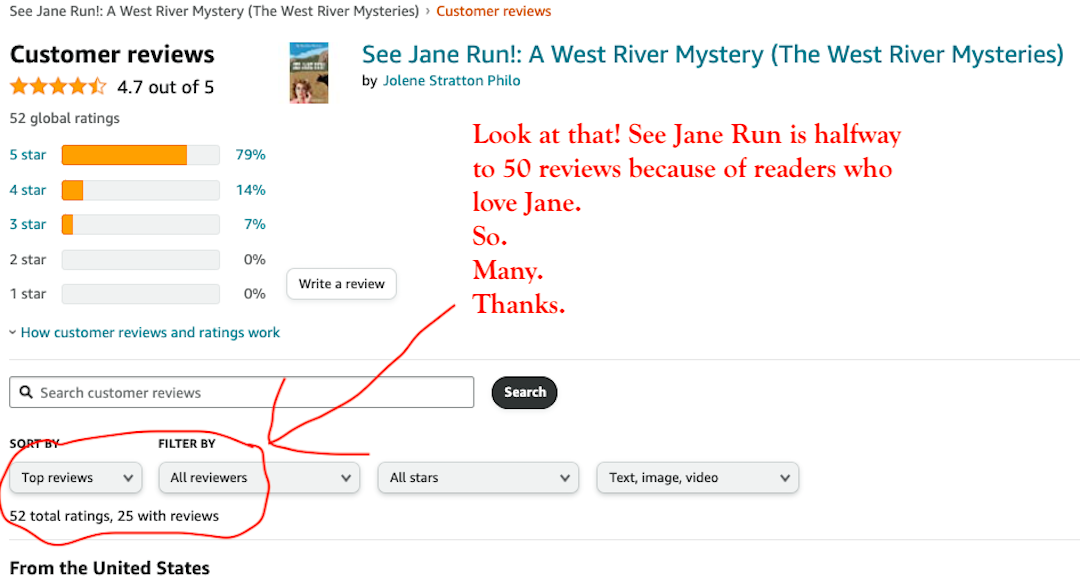
by jphilo | Jul 28, 2022 | Mystery Update, See Jane Run!
 See Jane Run! is gaining steam, and today’s post provides an update of what’s heating things up, what’s going on behind the scenes, and fun stuff to come.
See Jane Run! is gaining steam, and today’s post provides an update of what’s heating things up, what’s going on behind the scenes, and fun stuff to come.
Amazon reviews and ratings. Look at those numbers––25 Amazon reviews! That means Jane is halfway to 50, the magic number that will make Amazon algorithms sit up, take notice, and promote the book to a wider audience. See Jane Run! also has 52 ratings. While ratings don’t influence the algorithms like reviews do, they show that the book’s being read. That’s good news!
If everyone who rated See Jane Run! could be persuaded to write and post a review, it would reach the magic number in no time. And if there were reviews from everyone who’s read the book, imagine what that would do. I’ll tell you one thing that would happen. I’d record myself doing a happy dance and post it on social media. You heard it here first.
See Jane Run! audiobook is in production. How cool is that? I met with the voice artist a few weeks ago to discuss pronunciations, dialects, and such. She happens to be my niece who has speech communication and drama training. She teaches drama and directs plays in a large high school in the Des Moines Metro. Not only does she have the same midwestern speech patterns as Jane, she also has the teacher voice. I can’t wait to hear what she does with the narration.
The Harding County Fair. In a previous post, I wrote about our plans to attend the Harding County Fair this summer. (See Jane Run!’s Tipperary County is modeled after Harding County.) Those plans are complete, and we are looking forward to seeing old friends, meeting new ones, and showing off See Jane Run!. We’ll take oodles of pictures to show off the amazing beauty of the place where we once lived. I’ll be recording audio of people in the area to share with the voice artist and doing research for future books. It’s gonna be so much fun!
See Jane Run! is gaining steam and so is the entire West River Mystery Series. Stay tuned for updates about what’s happening with future books in the series.
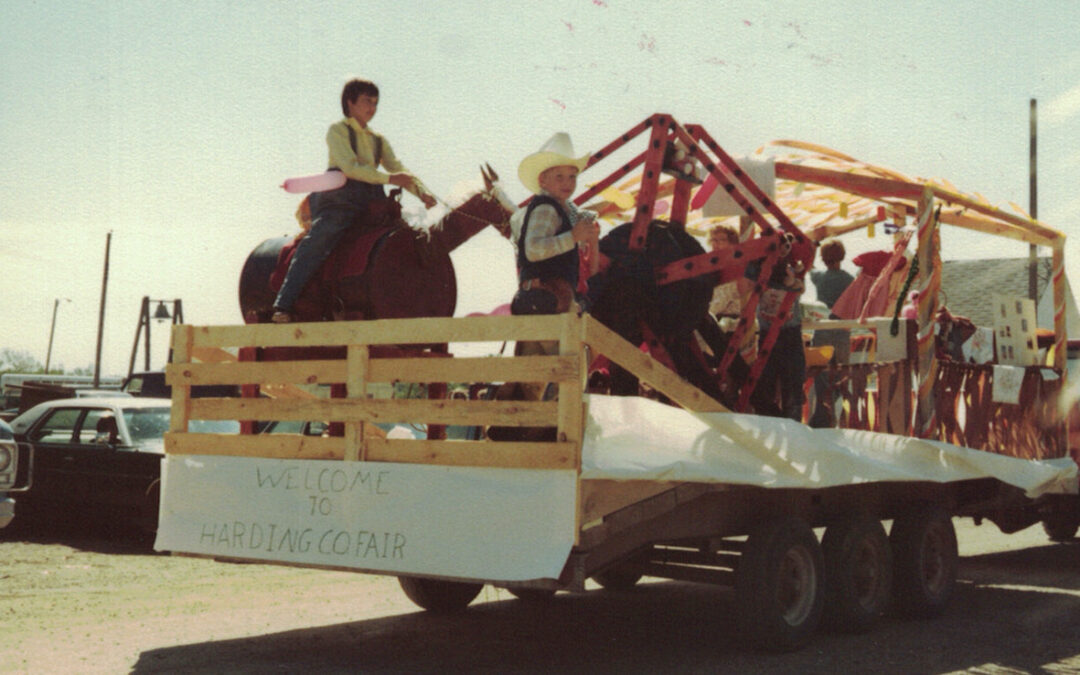
by jphilo | Feb 25, 2022 | Mystery Update, See Jane Run!

This float appeared in the Harding County Fair Parade in the early 1980s. The little guy in the white cowboy hat was one of my students. I don’t recognize the boy on the barrel horse.
Welcome to the Harding County Fair!
That’s what we’ll be saying come August 19-21, 2022 when Hiram and I go to the fair for the first time in almost 40 years. We’ve wanted to do it for years. Make that decades. But the timing never worked out. This summer is a different story now that Hiram is retired.
A few weeks ago, I sent a Facebook message to Darwin Latham. We got to know one another when we were cast members in the Harding County Players production of Bye Bye Birdie, and we are now Facebook friends. Darwin’s wife Kay is on the Harding County Fair Board, a fact I gleaned from the county’s newspaper, The Nation’s Center News, to which I subscribe. I sent Darwin a message asking him to please ask Kay about the possibility of promoting The West River Mystery Series during the fair.*
Keep in mind that Darwin and I haven’t seen each other since the early 1980s, and we didn’t know one another all that well. Even so, he passed the message onto his wife. She presented the request at the next Fair Board meeting, at which it was immediately approved. Since then Kay, whom I’ve never met in person, has sent a schedule and a list of best places for a book table for maximum visibility throughout the fair.
This kind of hospitality and cooperation was typical of Harding County when we lived there decades ago. It warms my heart that it remains so today. It is also why we are eager to join in the fun next August and greet fairgoers by saying, “Welcome to the Harding County Fair!”
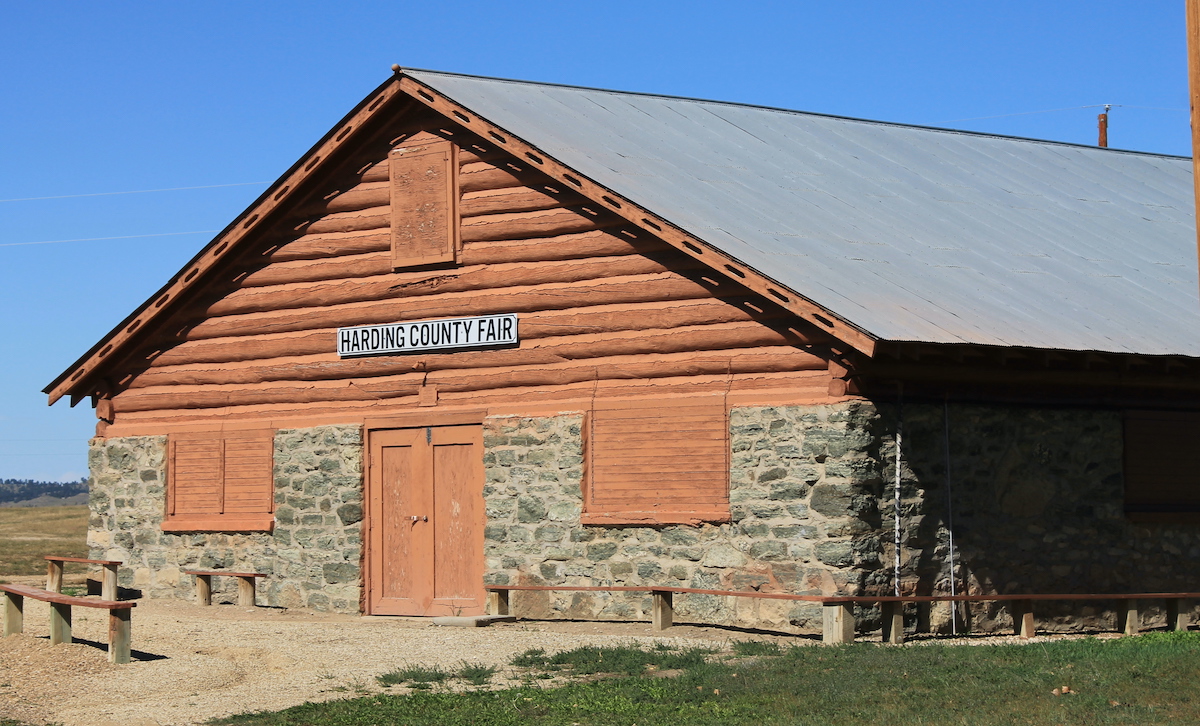
The Harding County Fair Building as it looked during a visit in September of 2013.
*Much of the action in See Jane Run!, the first book in the West River Mystery Series, unfolds during the Tipperary County Fair. The county and the fair building bear a striking resemblance to Harding County and its fairs during the late 1970s and early 1980s.
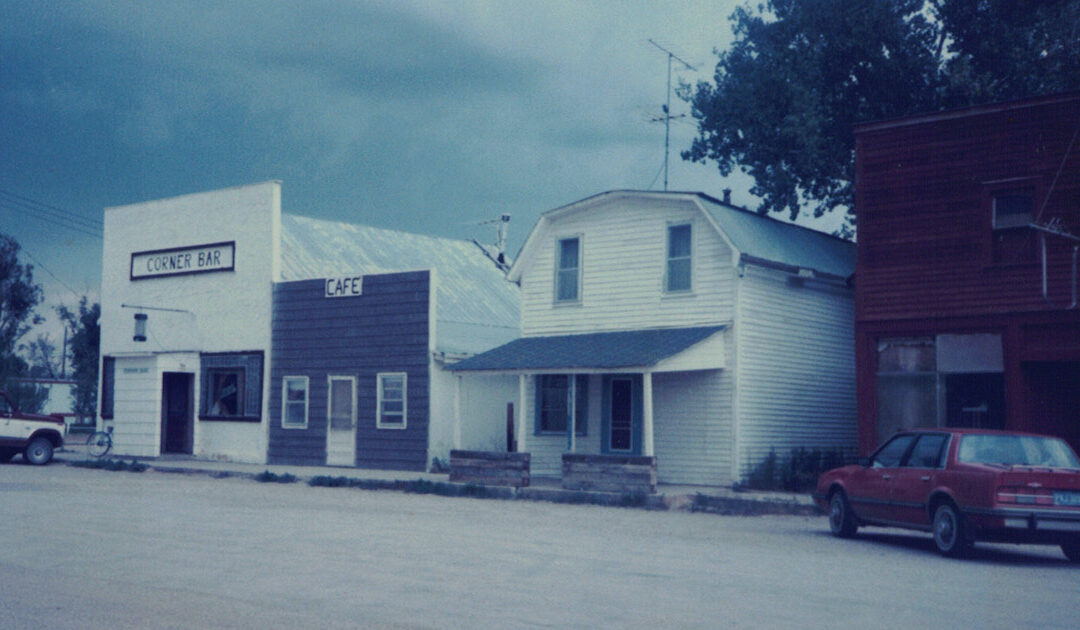
by jphilo | Jan 27, 2021 | Mystery Update
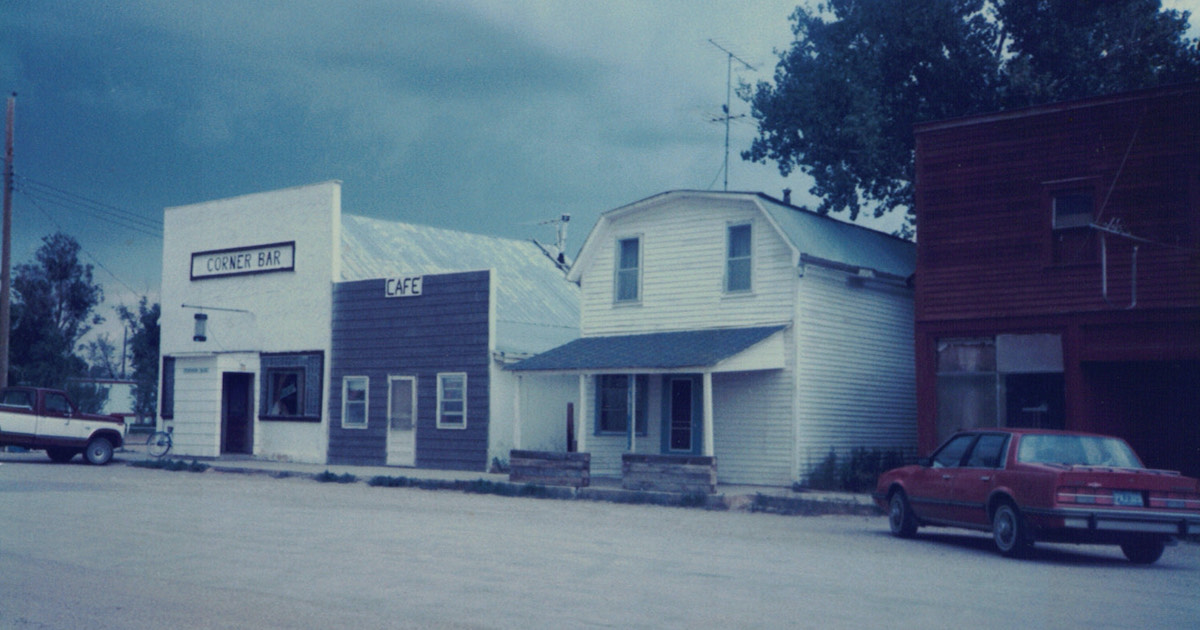
To take an editor’s advice or not is, at least in my book, is a tricky business. In this case, the book is See Jane Run! I cut my fiction writing teeth on this story. Writing the manuscript took the better part of ten years with interruptions due to the births of 4 grandchildren, authoring 4 non-fiction books, a hand injury that limited my typing to hunt-and-peck for several months, surgery on a broken foot for me, back and hip surgeries for my husband, the commencement of our multigenerational living arrangement, and moving into a new home after 25 years in the previous one. In the process, I listened carefully to feedback from several editors and came up with 4 questions to determine whether to take an editor’s advice–or not. Here they are:
- Have other editors or readers, independent of one another, said the same thing? When the answer was yes, I made revisions to take care of the issue.
- Does this feedback have the potential to solve a niggling issue I recognize but couldn’t figure out how to resolve? If so, I applied the suggestion to the manuscript, perhaps tweaking it a bit in the process.
- Does the suggestion enhance my vision for the story? If so, I used it.
- Does the editor have experience to back up a suggestion? If so, I was more likely to incorporate it.
Now, here’s are illustrations of how those questions helped me decide whether or not to take an editor’s advice.
Question #1
No less than 5 editors kind enough to read what I thought was the completed manuscript (that was at least 5 revisions ago), said the characters, setting, and dialogue were good. They also said the plot needed work. Their feedback led to major revisions, including the cutting of several early chapters.
Question #2
About 2 years ago, I paid a well-known editor a lot of money to give what I thought was the completed manuscript a thorough going over. She said that See Jane Run! had nearly all the elements of the cozy mystery genre rather than the historical mystery genre. Her words solved my ongoing niggling uncertainty about the manuscript, and the entire series, genre. I revised the manuscript yet again, following her suggestions about how to make it a full-fledged cozy mystery.
Question #3
The same editor also advised setting the story in the present day rather than in the late 1970s. She said books set in the 70s don’t sell well. After much consideration, I chose not to change the time frame because doing so didn’t align with my vision for a set in a remote area that forced people to rely upon one another rather than on modern technology. Also, the community is so remote that it feels more like the 1950s and 60s than the 70s. Books set in those decades are hot right now.
Question #4
Another editor also commented that the isolated, 1970s community where the story takes place didn’t ring true. She divulged that she was only a baby in the late 1970s, but all the books she read from that era included hippies and the Viet Nam war because that was what people talked about back then. As a young adult, I lived in a community similar to the book’s setting for 7 years starting in the late 1970s. The picture above is of Main Street. In our town in ranch country and populated by cowboys, hippies and the war were rarely mentioned. Based on my personal experience and the editor’s lack of it, the manuscript doesn’t mention them either.
The manuscript, which this time is very close to its final revision, is now with an editor who will make more suggestions. Will I use all her suggestions? No. Will I use some of them? Yes. Thanks to my 4 questions, deciding to take an editor’s advice–or not–while I read what this editor has to say won’t be quite such a tricky business.
Sign up to receive website updates and See Jane Run! book news on Gravel Road’s home page right under the picture of–you guessed it–the gravel road.
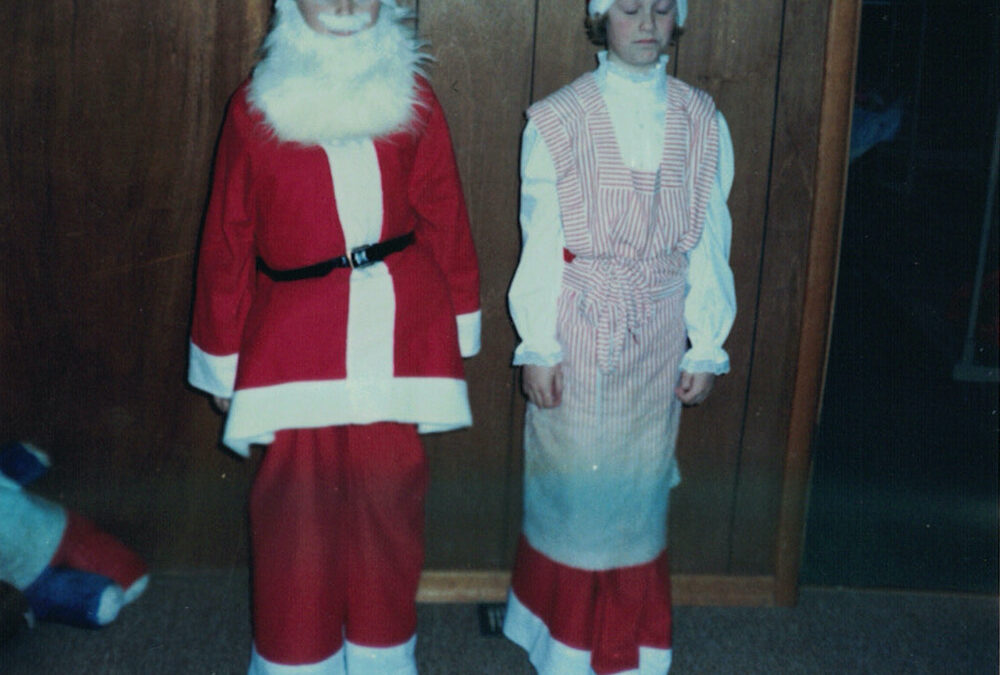
by jphilo | Dec 3, 2020 | Mystery Update
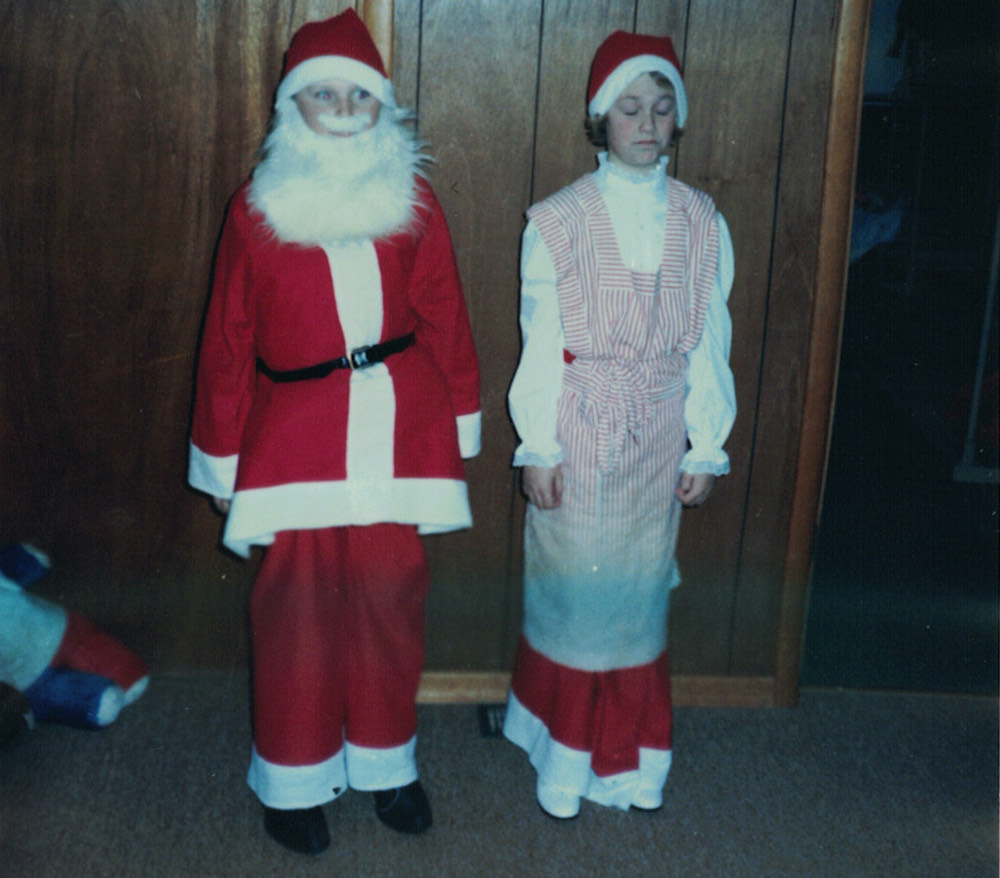
Country school Christmas programs were a big deal and still are where country schools still exist. That’s why preparing for the Christmas program plays a major role in See Jane Sing! In fact, the progress of the program is a device I use to drive the story’s sense of urgency. Jane wants to solve mystery before the Christmas program as the morning after the big show she will go to her parents’ home in Iowa for Christmas break.
But enough about that.
The purpose of this post is to focus on the Mr. and Mrs. Santa costumes in the above picture. But first, a word about the amazingly adorable models, Shawn Burghduff and Mary Philippe, who were third graders when they nabbed their starring roles in that year’s program. The picture evokes equal parts joy and sorrow when I see it. Joy to have been their teacher for three years and sorrow over Shawn’s death due to a freak illness when he was not yet thirty. When See Jane Run! is released, it will be dedicated to him.
Give me a minute to stop crying.
Okay, I’m back with some fun facts about the Mr. and Mrs. Santa costumes.
- I made the costumes. Except for Mrs. Claus’s striped apron and Mr. Claus’s black belt. Their parents supplied those.
- When we moved to Iowa, the music teacher borrowed the costumes every year for the third grade Christmas program.
- Before the first borrow, I made a white, ruffled apron and matching mob cap for Mrs. Santa.
- My daughter wanted to be Mrs. Santa Claus for Halloween when she was in second grade. I bought granny glasses, washed and ironed the costume, and boom, it was ready. She was adorable, and my propensity to save costumes was vindicated.
- I still have the costumes. They’re too big for my grandkids, ages 2 and 4, but that doesn’t stop them from playing dress up in them.
- Every time the costumes come out, I think of Shawn and cry happy tears.
Give me another minute to find a tissue.
Okay, I’m back with one last observation related to fictionalized scenes about country school Christmas programs. They take me a long time to write and use a lot of tissues.
Go figure.
Sign up to receive website updates and See Jane Run! book news on Gravel Road’s home page right under the picture of–you guessed it–the gravel road.














